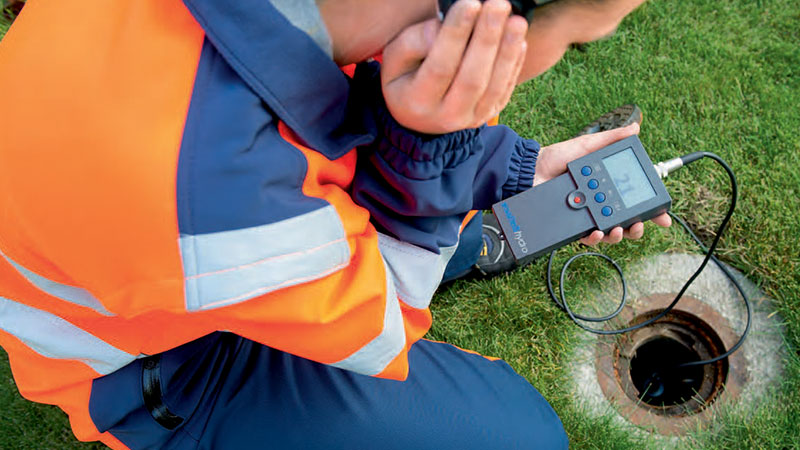Prevent Major Issues with Early Water Leak Detection and Prompt Repairs
Prevent Major Issues with Early Water Leak Detection and Prompt Repairs
Blog Article
Innovative Solutions for Very Early Detection of Water Leaks in Structures and Facilities
As the stability of structures and framework is vital, the difficulty of very early discovery of water leaks has actually stimulated cutting-edge options that promise to reinvent the way we secure versus prospective problems. From advanced leakage discovery innovations to the release of IoT sensors for real-time surveillance, the landscape of leak avoidance is evolving quickly. Equipment knowing formulas supply a glimpse into the future of leakage forecast, while thermal imaging presents a non-intrusive technique for identifying surprise leaks. Automated water flow analysis systems are improving exactly how leakages are determined and resolved, paving the way for a positive technique to water leakage discovery. Each of these solutions holds the essential to making sure the integrity and long life of our built environment, prompting a shift towards a much more lasting and effective future.
Advanced Leak Detection Technologies
Advanced leak detection modern technologies, outfitted with sophisticated sensing units and formulas, play a crucial role in promptly recognizing and determining water leaks in various settings. These modern technologies use a mix of acoustic, thermal, and electromagnetic noticing methods to detect leakages precisely. Acoustic sensors detect the audio of running away water, enabling accurate localization of the leak resource. Thermal imaging finds temperature changes triggered by water leak, providing an additional reliable technique for leak identification. Electro-magnetic sensing units can recognize changes in magnetic fields caused by water, using yet another layer of leak detection ability.

IoT Sensors for Real-Time Monitoring
In the realm of contemporary water leakage discovery, the assimilation of IoT sensors for real-time monitoring represents an essential advancement in enhancing positive leak discovery abilities. These sensing units supply continual surveillance of water supply, offering real-time data on water circulation rates, stress variants, and temperature level adjustments. By leveraging IoT innovation, these sensors can find also the tiniest abnormalities in water use patterns, allowing very early identification of prospective leaks before they escalate into major concerns.
IoT sensing units send information to a central platform, where sophisticated algorithms analyze the information and create signals or alerts when abnormalities are found. This real-time tracking ability enables homeowner or facility managers to promptly resolve leakages, lessening water damage, reducing fixing expenses, and saving water resources.
In addition, IoT sensing units can be integrated with building monitoring systems, permitting automatic responses to detected leakages, such as shutting down water shutoffs or triggering pumps to reduce the impact of leakages. Generally, the implementation of my explanation IoT sensors for real-time surveillance substantially enhances the performance and efficiency of water leak discovery in buildings and infrastructure.
Artificial Intelligence Algorithms for Leak Forecast

One trick advantage of using artificial intelligence for leakage prediction is its capacity to constantly learn and boost its accuracy over time. As even more data is accumulated and fed into the formula, it can fine-tune its predictions and adjust to changing problems, ultimately raising the dependability of leakage detection systems.
Moreover, artificial intelligence formulas can aid in determining subtle indicators of leaks that might go unnoticed by traditional surveillance approaches. water leak detection. By analyzing intricate data sets in real-time, these algorithms can offer early warnings and alerts, permitting for prompt treatment and preventive maintenance to minimize potential water damages and linked expenses
Making Use Of Thermal Imaging for Leak Detection
Thermal imaging modern technology provides an appealing approach for finding water leakages in various systems and facilities. By making use of infrared radiation and temperature level variances, thermal imaging cams can identify covert leaks that are not quickly noticeable to the nude eye. When water leaves from pipes or frameworks, it usually changes the temperature of the surrounding location, producing temperature level differentials that thermal cameras can capture. These temperature irregularities are then equated right into noticeable pictures, highlighting the specific area of the leakage.
One of the crucial benefits of thermal imaging for leak discovery is its non-intrusive nature. Generally, the usage of thermal imaging modern technology boosts the performance and accuracy of water leak detection, making it a beneficial device for preserving the integrity of get redirected here structures and infrastructures.
Automated Water Circulation Evaluation Solutions
Just how can automated water flow evaluation systems reinvent the detection and administration of leaks in different systems and infrastructures? Automated water circulation evaluation systems use a proactive technique to leak detection by continually keeping an eye on water flow rates and patterns. By developing baseline data, these systems can promptly determine discrepancies that might indicate a leak, making it possible for prompt treatment to protect against substantial damages.
These systems utilize sophisticated formulas to analyze real-time data and give immediate informs when abnormalities are discovered, permitting swift activity to be taken. In addition, automated water flow evaluation systems can be incorporated with building management systems or IoT systems, boosting overall effectiveness and allowing remote surveillance capacities.
In addition, the information accumulated by these systems can be made use of for anticipating upkeep functions, assisting to determine prospective weak factors in the facilities prior to leaks occur. In general, the implementation of automatic water flow analysis systems can considerably enhance leakage detection and administration practices, ultimately leading to set you back financial savings, reduced water wastefulness, and raised sustainability in structures and framework.

Conclusion
In final thought, the assimilation of innovative leak detection innovations, IoT sensing units, machine knowing algorithms, thermal imaging, and computerized water circulation analysis systems provides ingenious options for very early discovery of water leakages in structures and company website framework. These technologies enable real-time monitoring, prediction of leaks, and effective detection techniques to stop water damage and waste. Applying these services can aid in preserving the honesty and sustainability of water supply in numerous setups.
Report this page